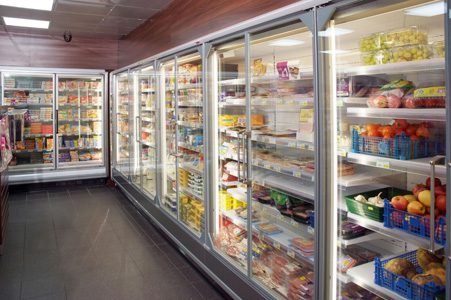Many c-store owners are keen to improve the energy efficiency of their refrigeration equipment. The cabinets on show to the consumer are important, but commercial refrigeration firm Hubbard argues, in this article, that the equipment the shopper doesn’t see, and the tax incentives offered for efficient kit, are also key to the best refrigeration solutions.

POORLY stored and presented chilled or frozen food is a consumer turn-off and creates a major headache for the convenience retailer. It causes a financial drain and carries the potential for public health issues.
Simply changing or upgrading a cabinet is only half the battle, if the condensing unit is old or inefficient, it will be unable to cope with the flexibility of performance a new or updated cabinet calls for.
Fortunately, manufacturers of refrigeration condensing units have designed units to address the problem. And government in the UK, in the drive to reduce carbon emissions, has created favourable tax incentives for retailers, such as the Enhanced Capital Allowance (ECA). Hubbard Products is one of the leading manufacturers of ECA qualifying refrigeration condensing units.
Convenience stores can pose problems for refrigeration engineers.
The noise of refrigeration compressors serving a location can cause friction with the very customers the store owner relies on for his living. Footfall varies across peak periods during the day, cabinet door openings increase at peak shopping times, and ambient temperature and humidity change with the season, and even with the number of people in a store.
Replacing the packaged condensing unit at the same time as upgrading cabinets makes considerable sense, and can be done tax efficiently using ECA with the side effect of improving cash flow and reducing energy running costs. The ECA allows the purchaser to set the full capital cost of the refrigeration equipment, cabinet, installation and all associated costs against their profit for that tax year.
Dougie Stoddart, commercial director of Hubbard Products explained how modern digital condensing units are critical to making convenience stores more profitable.
“Glass door display units are a popular choice with convenience stores. They allow greater control over product quality and presentation and are widely accepted by consumers. They also place larger demands on the remote refrigeration condensing units that supply the cooling capacity. Older hermetic types have now been superseded by digital scroll compressor units as the refrigeration of choice.
“Hubbard’s Zenith Digital Condensing Units offer a high level of flexibility and responsiveness for use with multiple cabinets, for example, a combined chiller display comprising a run of glass door and separate cabinet section.
“Many retailers are moving to more cost-efficient methods of chilled and frozen display, especially the dairy sector where glass door cabinets are standard. With these displays, compressor duty demands differ significantly with high loads during store opening times and very low loads over night.
“Digital Condensing Units offer responsive performance directly reflecting the duty requirement at any given time, anywhere from 10% to 100% of seamless, variable capacity. This flexibility saves energy when cabinet doors remain closed overnight or at times of low footfall, unlike non-digital units that consume energy regardless of the real-time requirement. And, digital units that run for shorter periods are less noisy and intrusive in urban locations.
“Hubbard was the first manufacturer to achieve Energy Technology List approval and the first to offer Enhanced Capital Allowance tax breaks to its customers. The new breed of Hubbard digital units, add to a long line of energy-efficient compact models. And, importantly, all retailers, large and small, from independent outlets, through symbol stores to express, convenience and forecourt outlets, benefit from the improved cash flow that the ECA offers.”


















